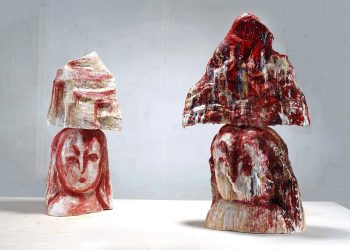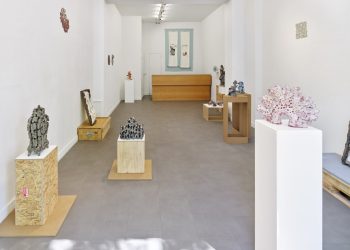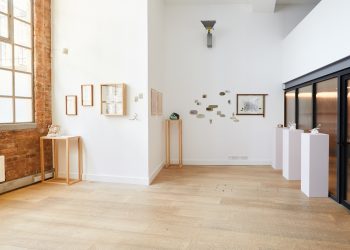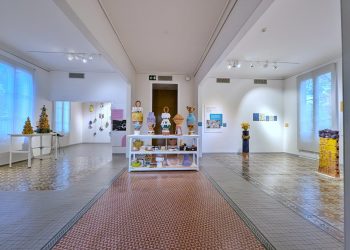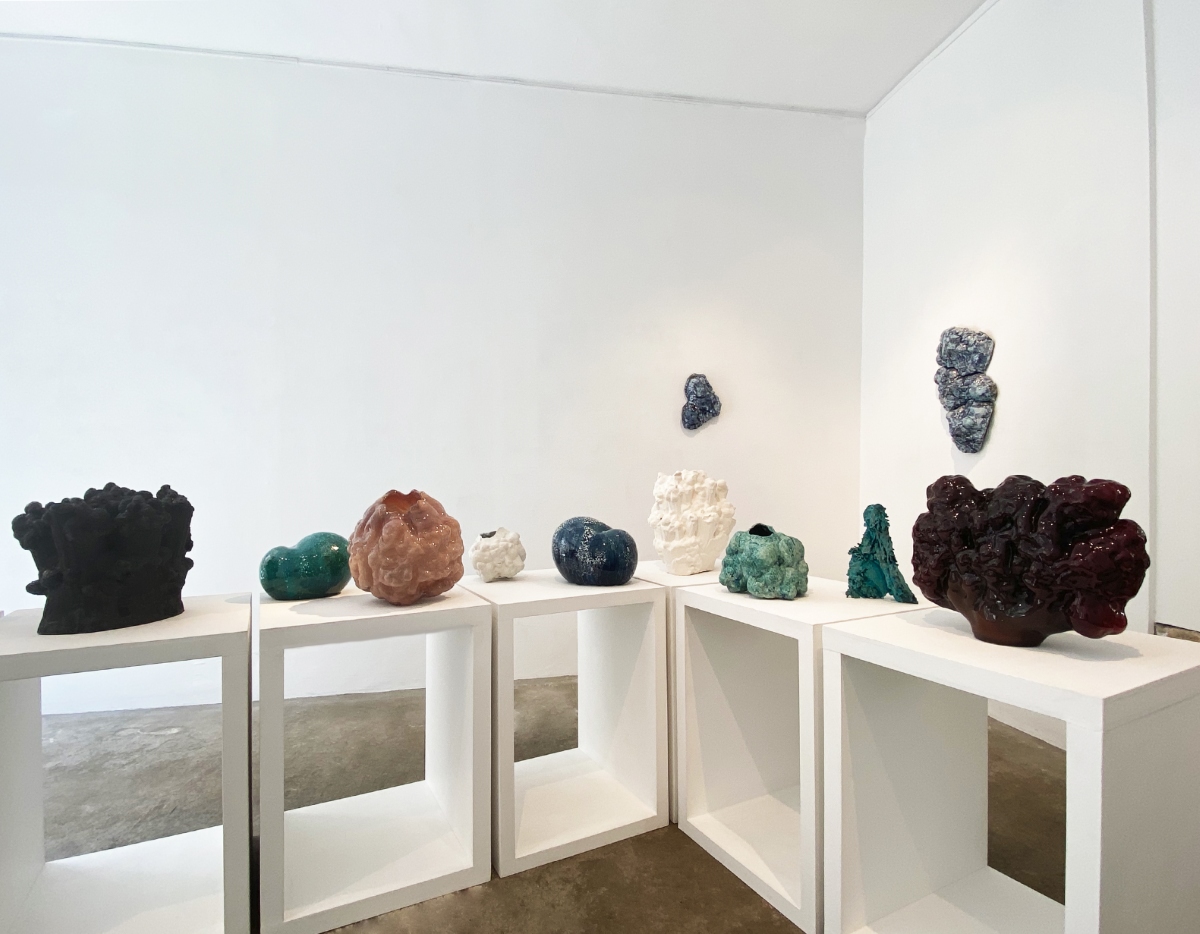
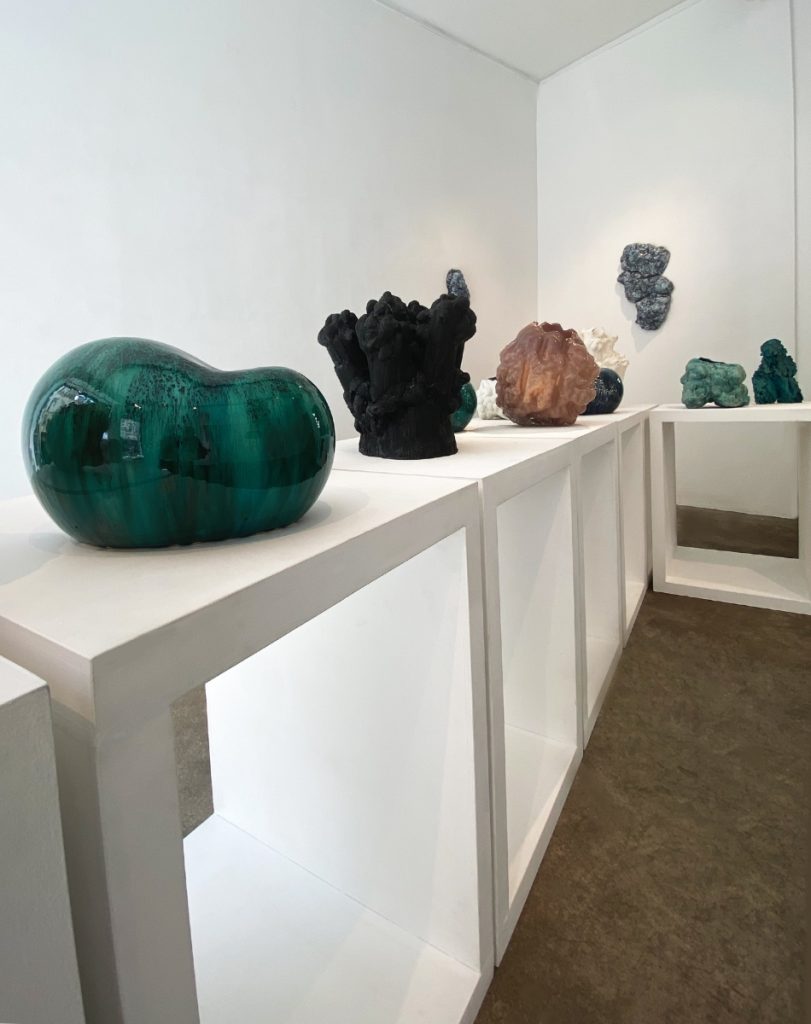
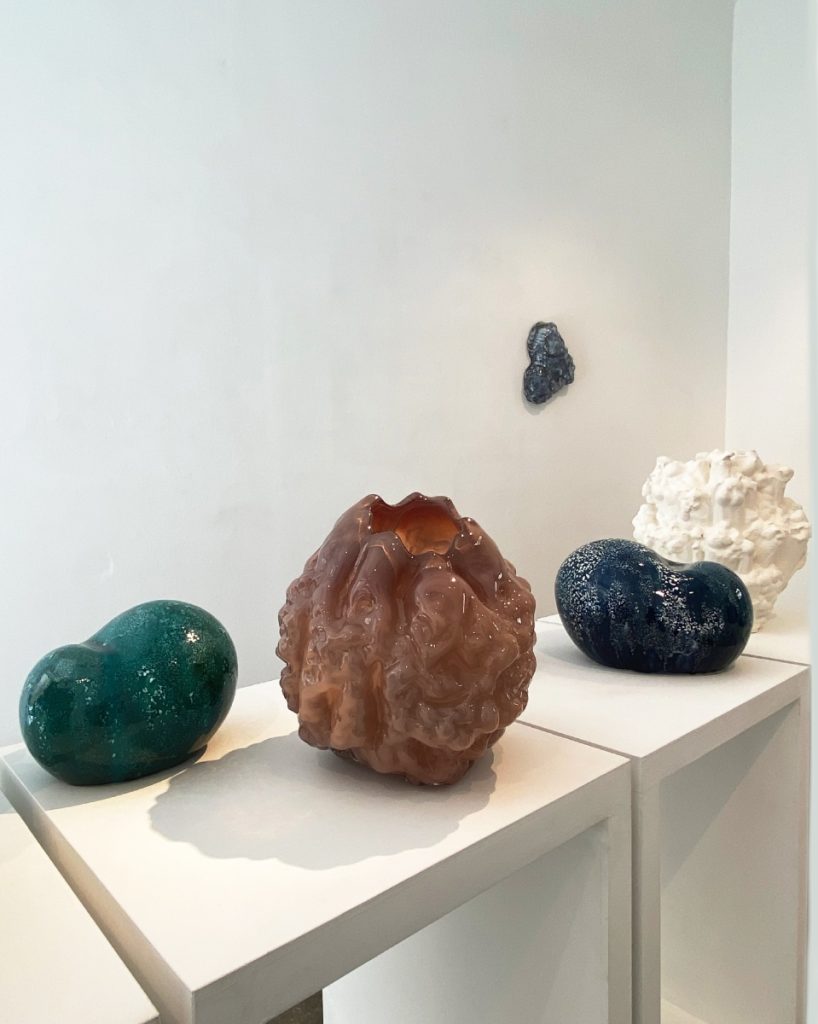
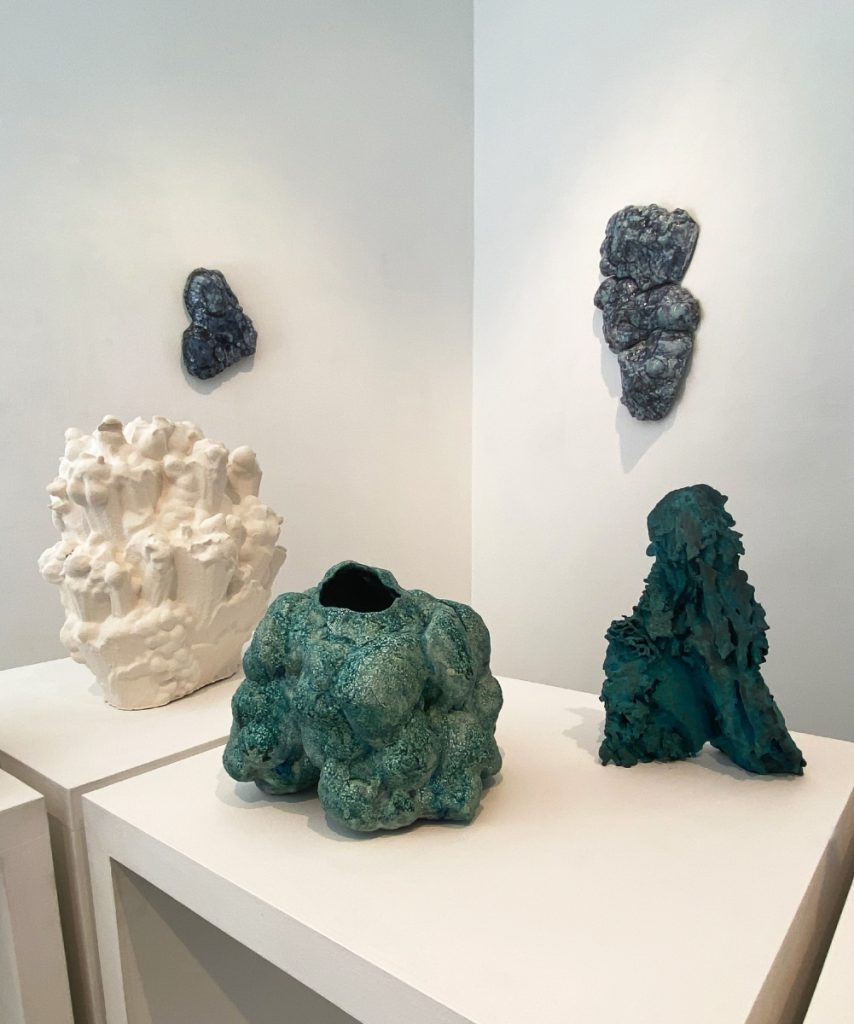
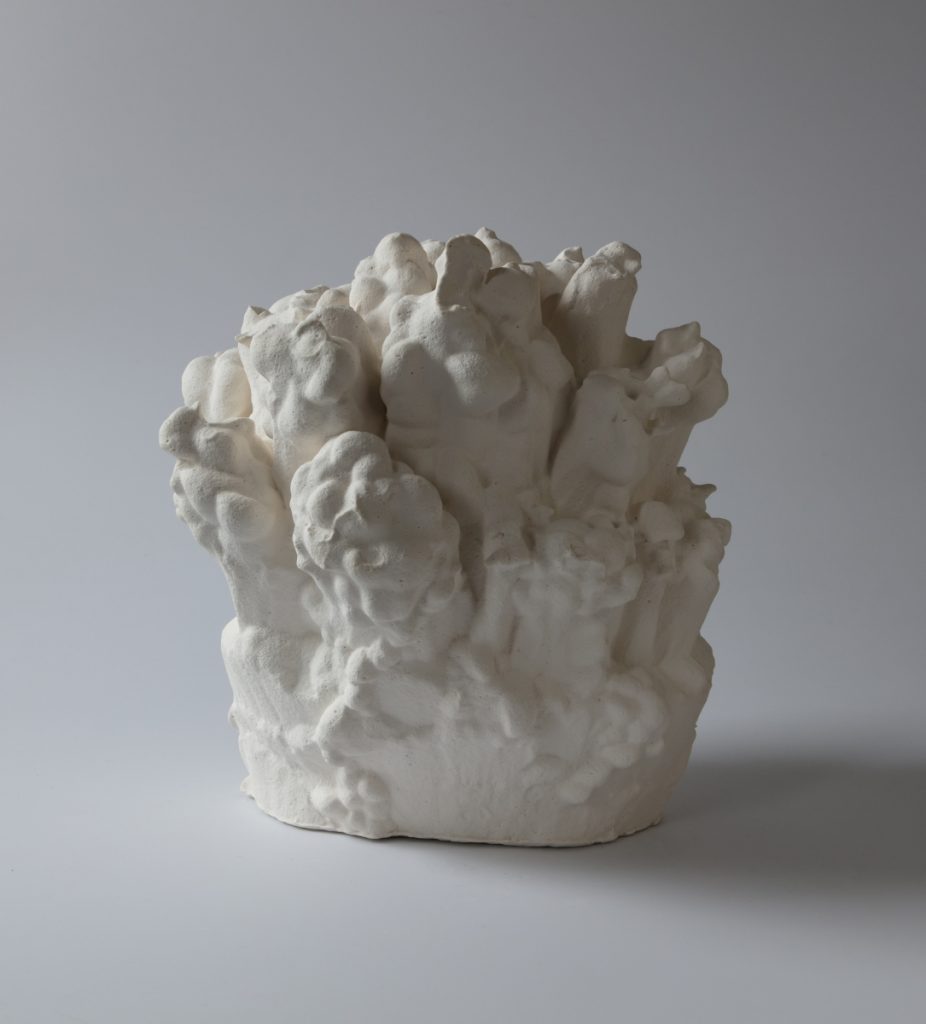
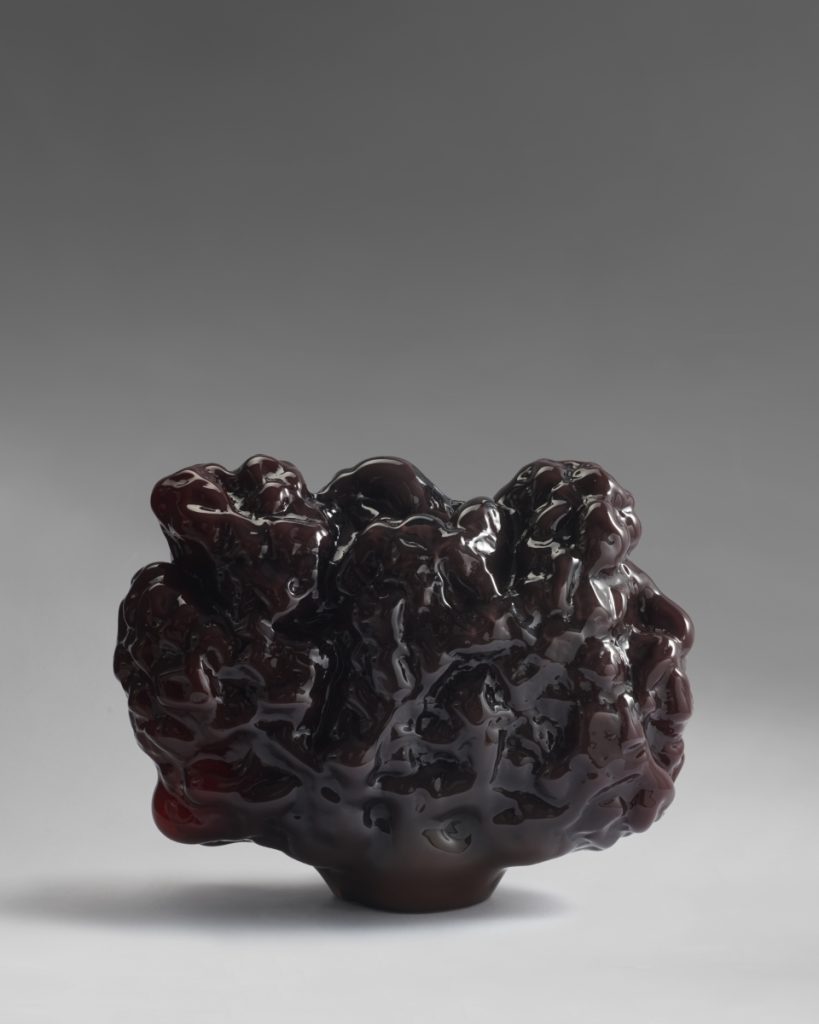
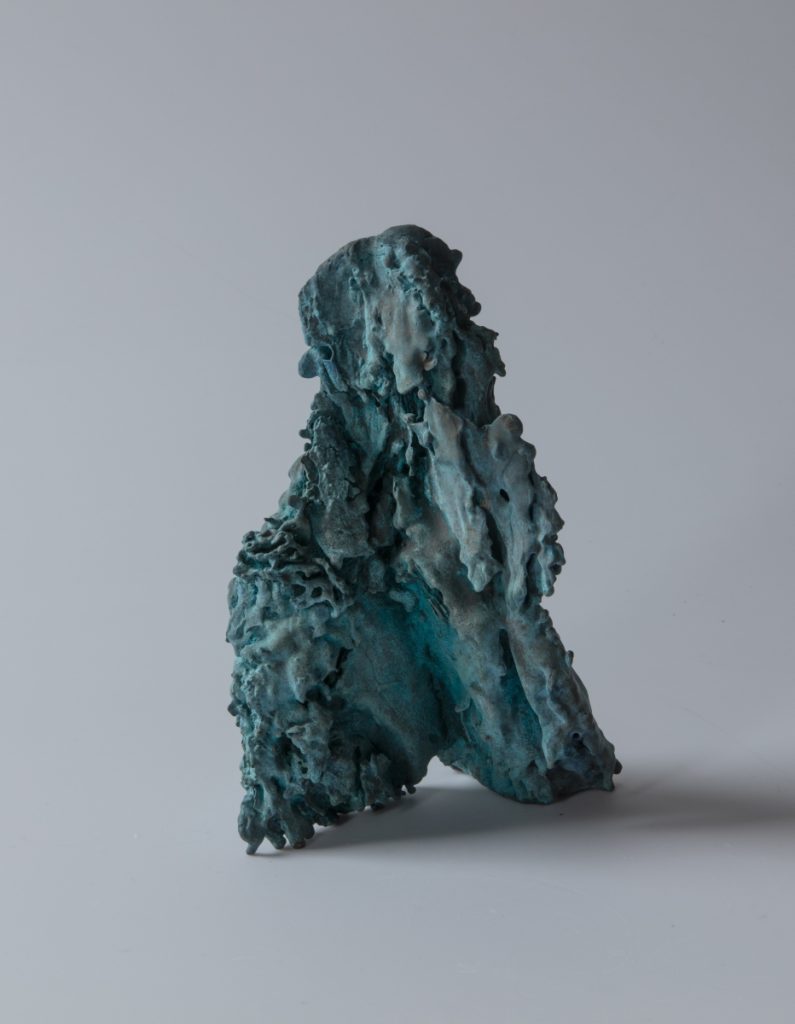
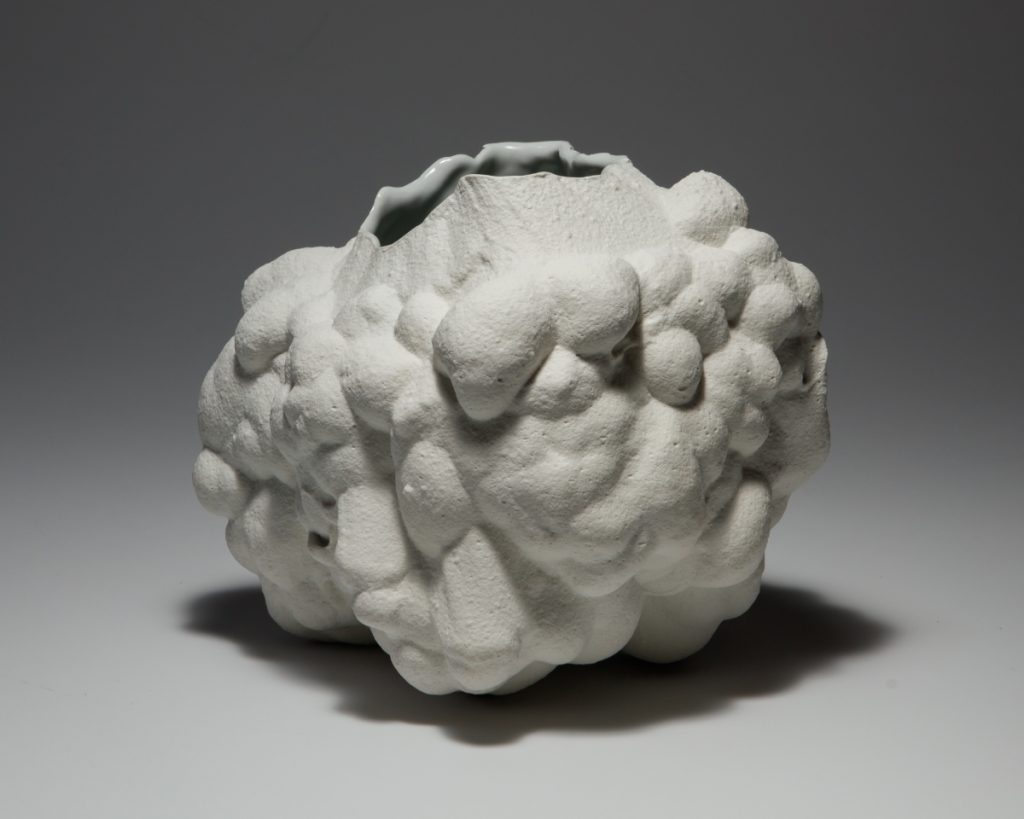
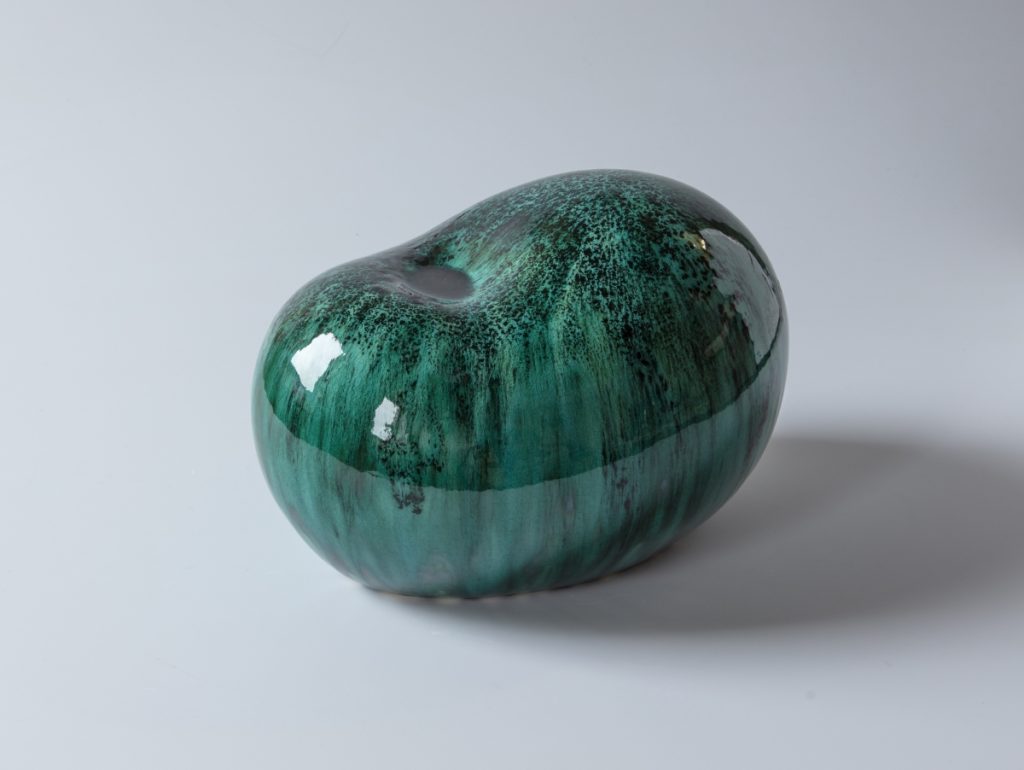
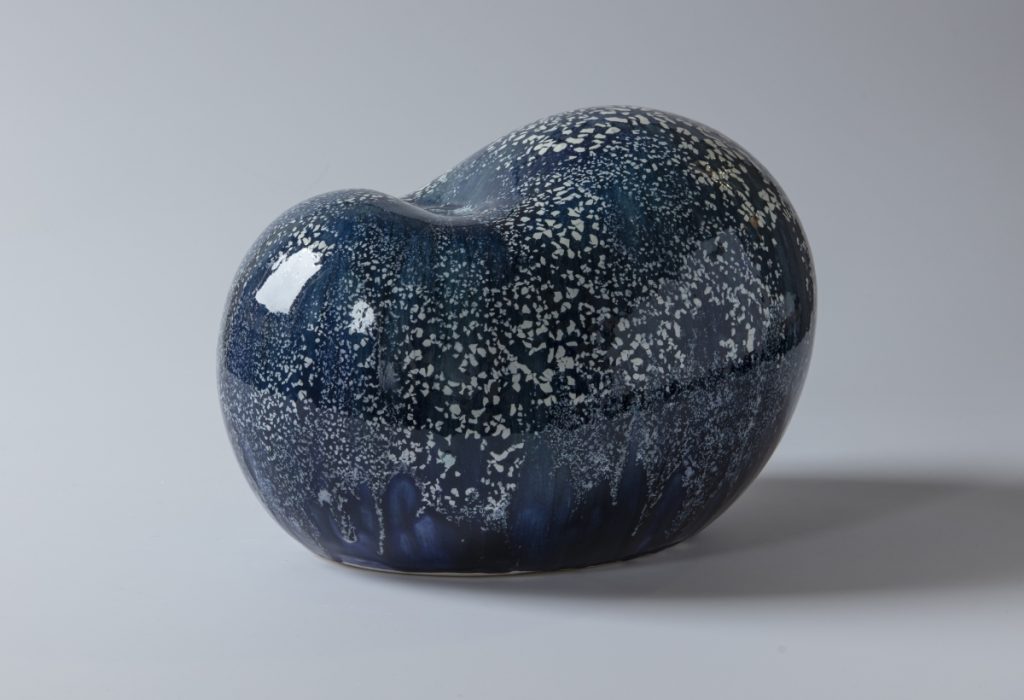
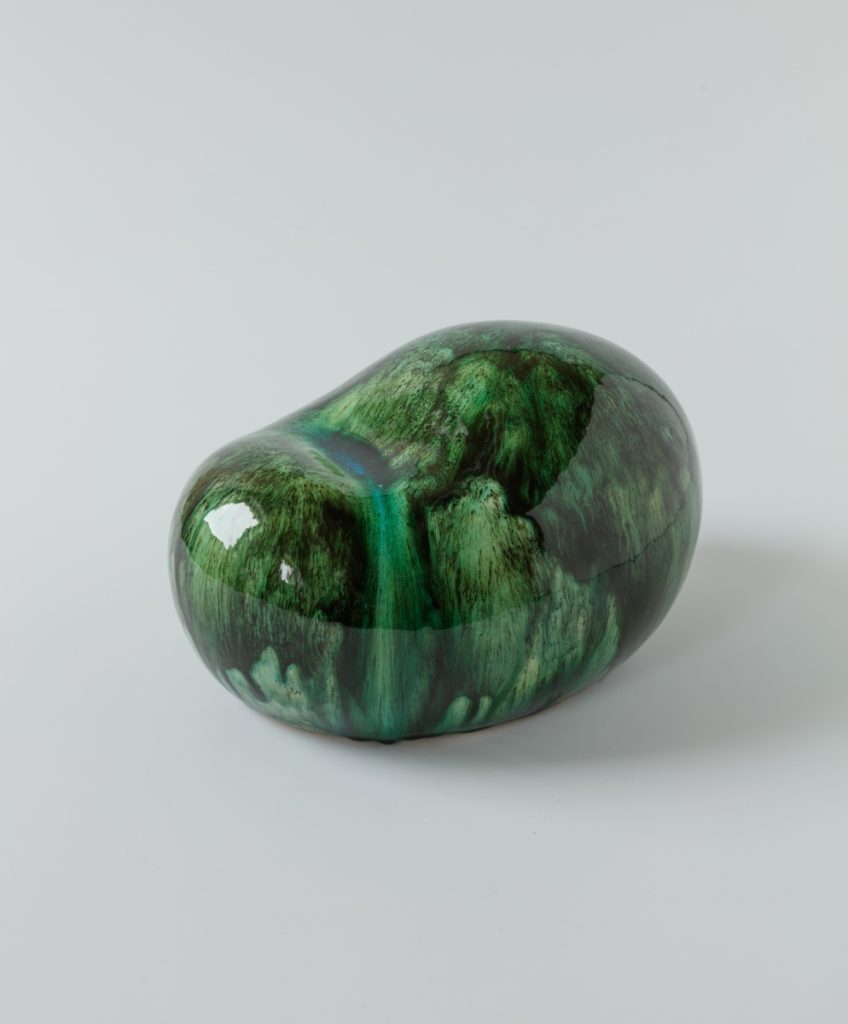
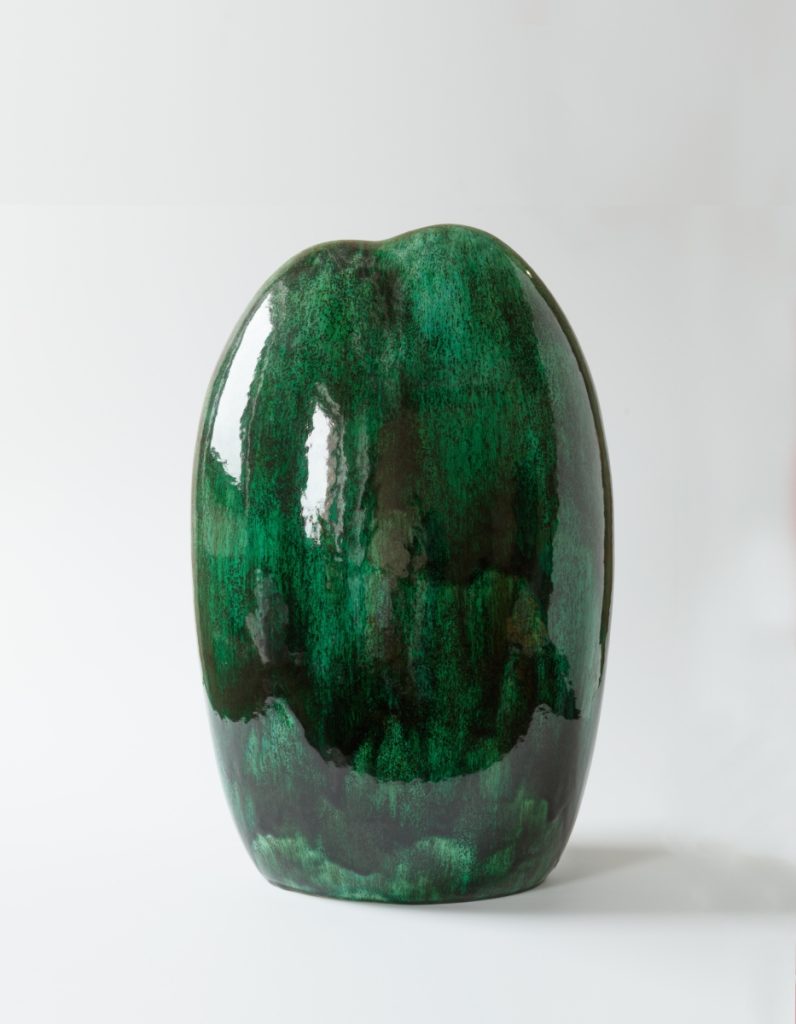
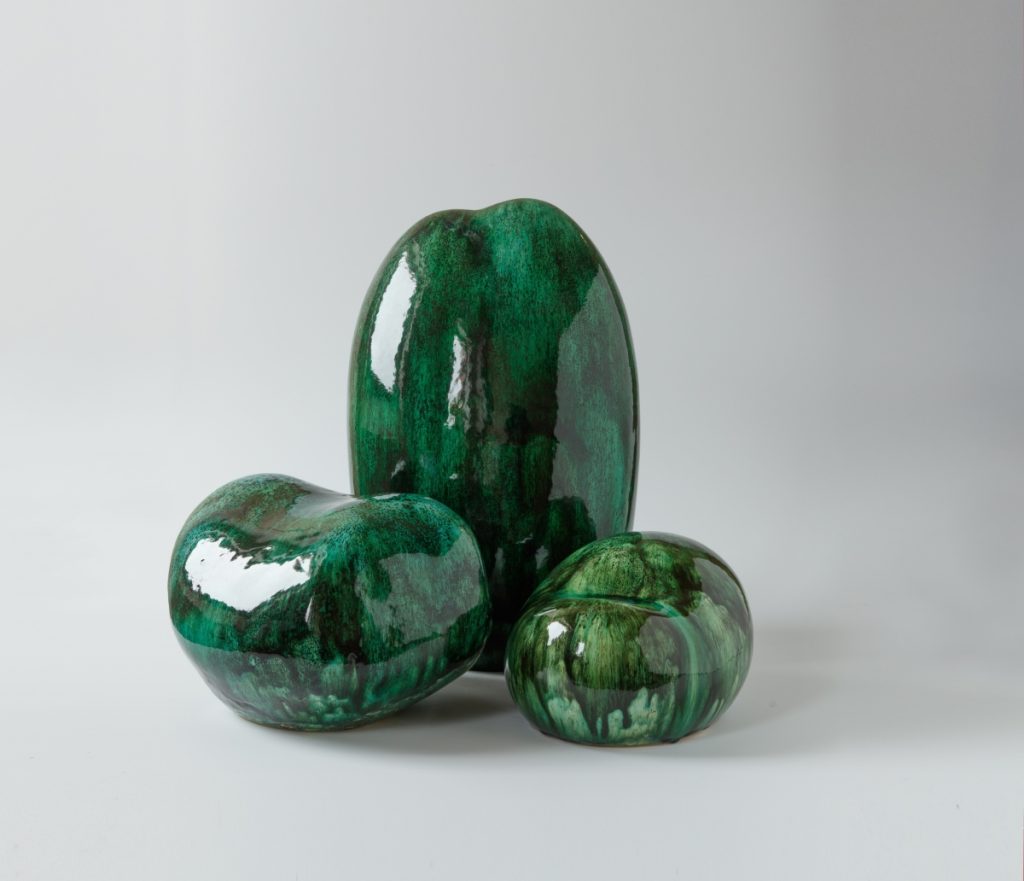
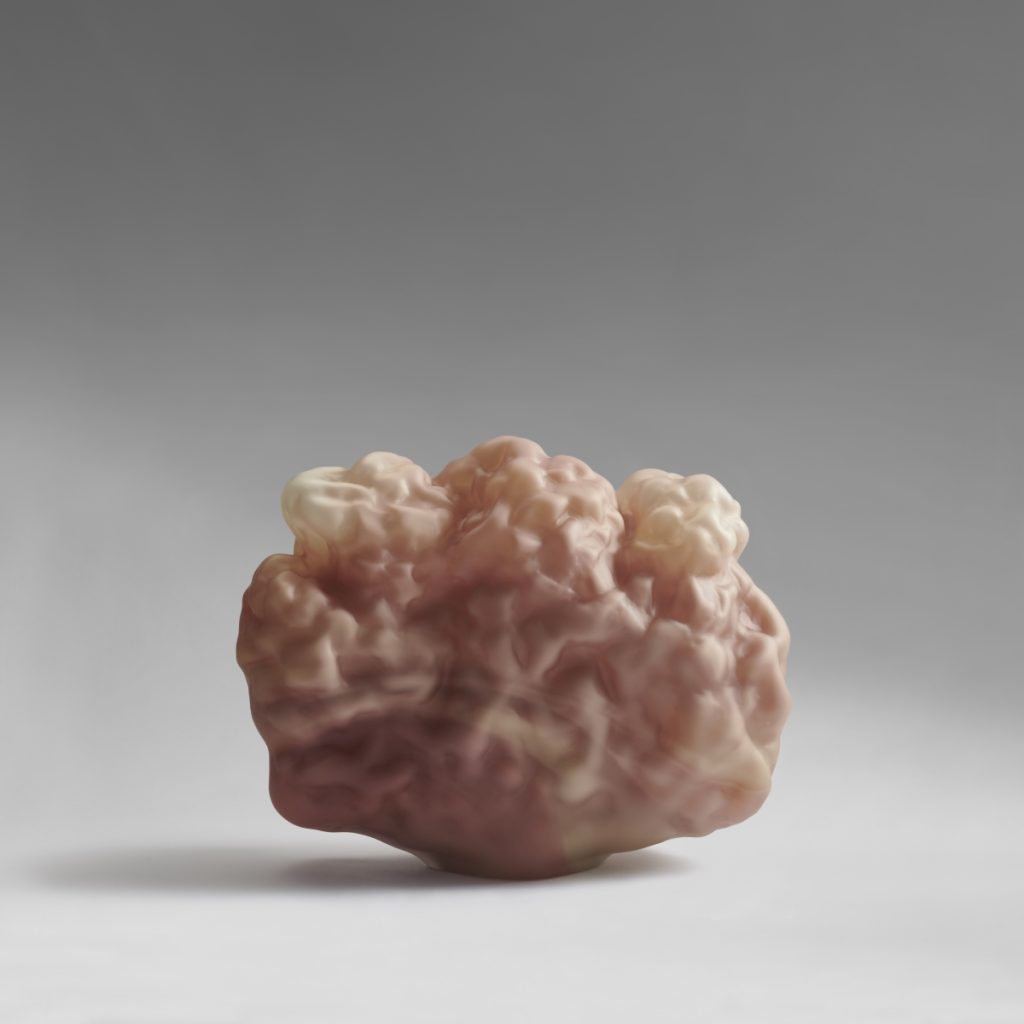
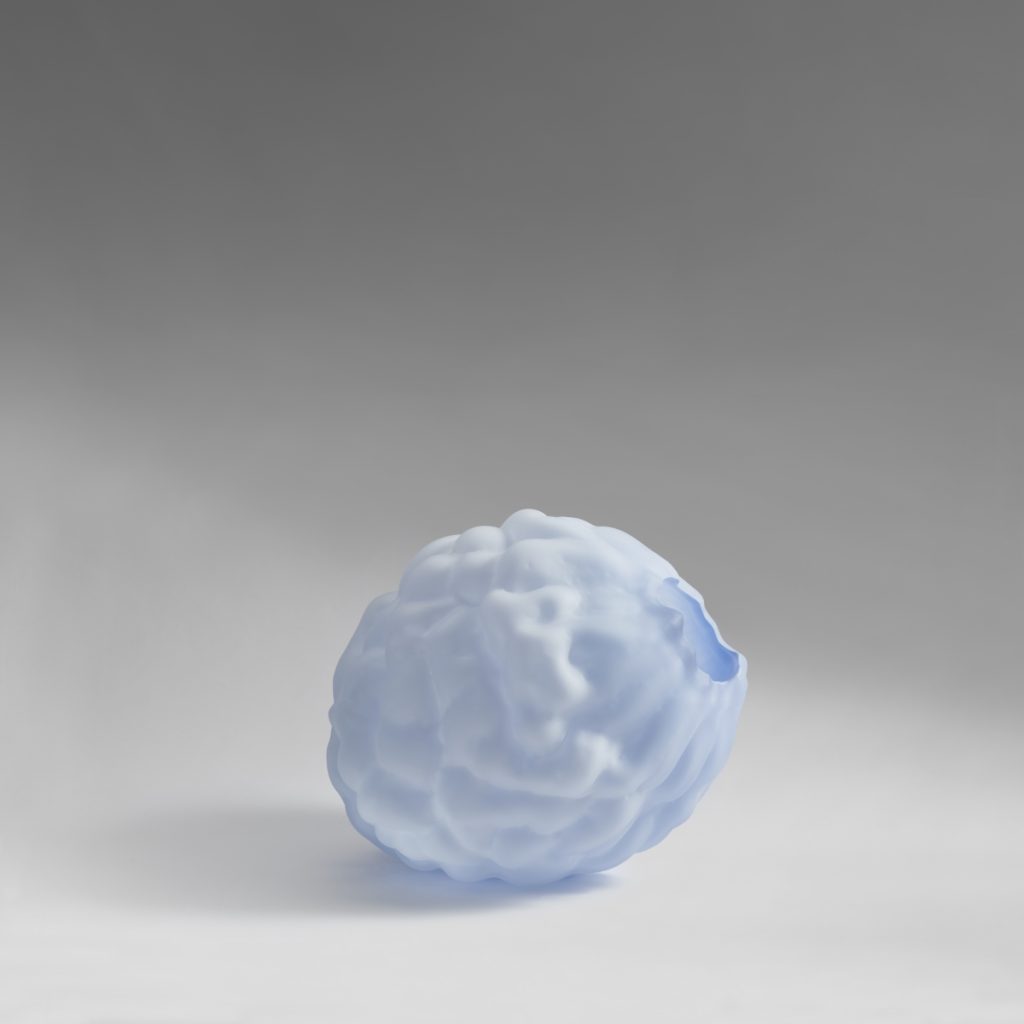
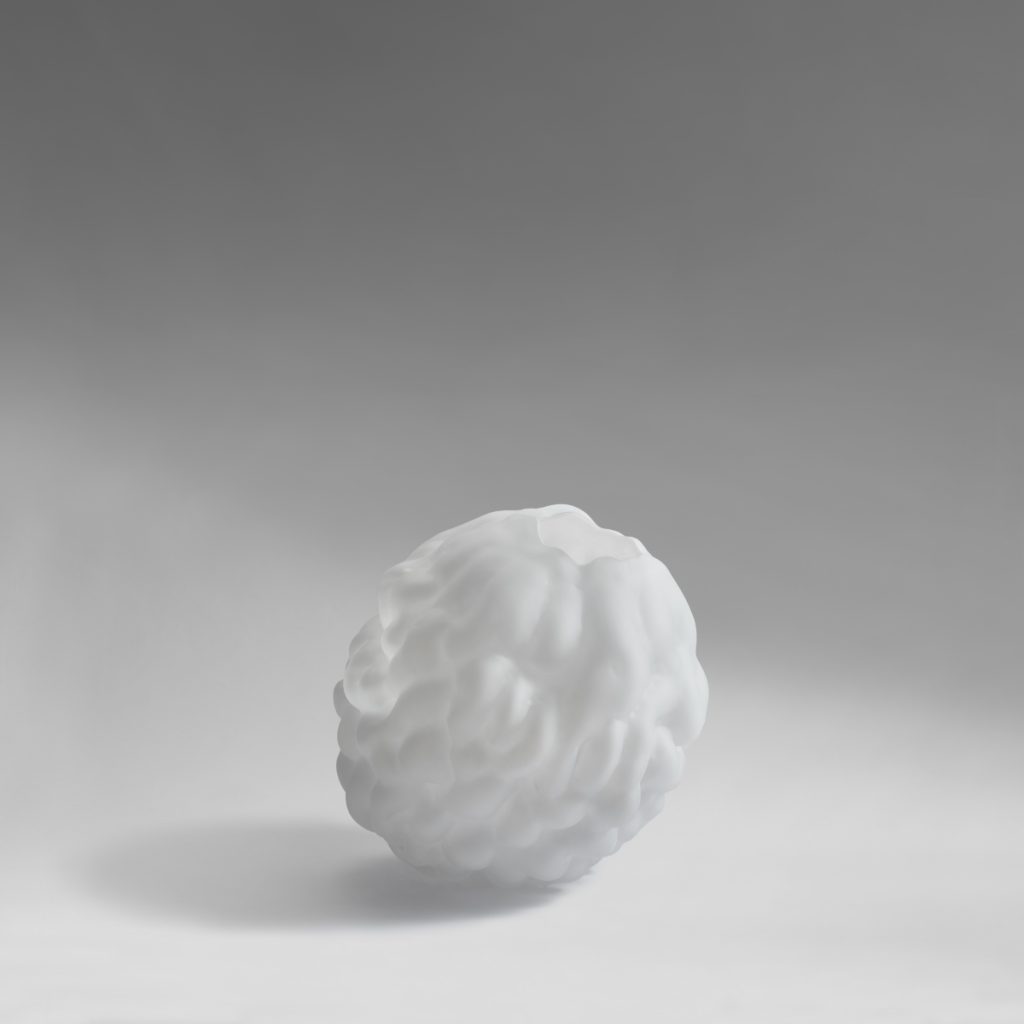
Ellen Ehk Åkesson: I Remember a River is on view at Galerie NeC, Paris
May 3 – June 15, 2024
Galerie NeC is pleased to present Ellen Ehk Åkesson’s solo show, I Remember a River.
Slick stones in a river. The thought of water running over them, rushing, gushing. Soft algae that colour the surface, so surprisingly green, almost fluorescent. The next object; a coarse surface, seemingly volcanic, but originating from the forest. A knotted pine crouches down, appearing to be on the run, sneaking away from its place. What if the trees move during the night? Fittingly, the sculpture is called “Night Tree” and came into being through Ellen Ehk Åkesson’s research into the soul of nature.
In her art Ellen works both methodically and intuitively. In many ways you could say that she personifies the new artist’s role. Contemporary artists today seem to take on a role that was previously carried by many different professions; the adventurer, the priest, the journalist, the scientist, the shaman. What kind of discoveries can be made through a material?
In Ellen’s expertise of working with ceramics, glass and bronze, among others, it is impossible to stay within the boundaries of the medium. The material is so intimately tied to the story it is telling, to the question it asks. Does a stone in a river shine? Does a tree dream at night? What does it dream about? Can the memory of a forest hold a physical form? And what form could that possibly be?
Geomancy is a concept connecting diverse spiritual practices of fortune telling in natural elements such as sand, bone and pebble stones. It is a method practiced around the world in many different cultures, and the concept has guided forth new works by Ellen Ehk Åkesson, giving weight to the form of the material, the intention of the practitioner as well as the importance of chance. The spatial relationship between objects are central to the belief system and tells us how life here on earth is connected to planetary bodies. Within art, where the connection between form and intentions of the artist is of great importance, a concept such as geomancy is also fitting as it alludes to ancient relationships that artists have to many different materials.
Is there a difference in growing up in rural and urban spaces? Could it be said that we are equally brought up and fostered by surrounding rocks, plants, animals and the elements of weather as by human kin?
Ellen grew up in proximity to the forest. As a child she spent much time in the forest, it was her home, her place of adventure and of consolation. An informal learning environment where she was taught strength, agility, intuition and healing. With her (human) best friend, she took turns climbing as far up in trees as possible to dangerous heights that pushed the boundaries of what the body might perform. The cuts and scars in the skin of their legs became proof of victories won, something to flaunt in school, something to use as a tool for measuring bravery. When Ellen reached her teens “her” forest was cleared through a severe form of clearcutting that is no longer allowed in forestry. She describes the experience as a form of silent trauma. If her childhood house had burnt down everyone would have understood her deep sorrow, but her home happened to be a forest that no longer existed.
In her early biography, Ellen Ehk Åkesson focused on the field of craft and she became well known and much respected in Sweden for her explorations of utility objects. Thin cups, stylish teapots, and an interest in functional objects as a form of intimacy. A cup made by the hand to be passed on into another hand that raises the cup toward his or her own lips. But in the creative process of making sets of beautiful craft objects a frustration also arose in Ellen. This is how some of Ellen’s first artworks were formed, as quite heavy rocklike forms.
These early sculptures have a heaviness and darkness attached to them. Ellen Ehk Åkesson also completed an art exhibition where the art objects were laid onto benches and tables of stainless steel, alluding to autopsy and dissection. The clearcutting of her forest had now received a series of physical narratives.
What are the effects on nature in the human desire to extract value, maximize profit and tame natural environments?
Ellen Ehk Åkesson shows us the relationship between the body of nature and our physical bodies. The “Night Tree” that came about through Ellen’s persistent experimentation by glazing small pine trees and firing them in the kiln illustrates both Ellen’s interest in nature’s own intelligence and rhythm of time as well as her untiring ways of exploring a certain material. After months of finding broken porcelain pines in the kiln a night tree finally came out whole, unbroken but infinitely fragile. Later, she developed a production form of creating similar trees using wax and casting them in bronze. And, in a further development of these art objects she started building new trees that seem to stand on or run on their roots through consolidating several different trees and their root systems into a single sculpture.
In ceramics, Ellen Ehk Åkesson continues her discoveries. After having explored the boundaries, conditions, and limitless possibilities of clay as a material over two decades, she has come to work mostly with liquid clay. Sometimes the work with a sculpture begins with what is usually the finishing procedure in ceramics, the glazing of the object. Ellen also continues to invent new ways of casting ceramics. The studio becomes a laboratory where new findings around material and form are made. At the same time a visit to her studio brings to mind natural phenomena such as the elements of wind, water and heat; the weather. A sculpture takes on the form of a coral, but the point of departure is actually forest moss. In her personal manner Ellen manages to reveal what indigenous populations and mystics across the world have always known. What is found on land has a mirror in the ocean. The roots beneath earth reach forth and forward in a form that meets the crown of a tree.
In the fall of 2019, Ellen Ehk Åkesson received an award in memory of the late artist Ulrica Hydman Vallien that included a production residency in the glass-blowing studios of Kosta Boda, Sweden. Once again, Ellen invented her own method of producing sculptures, this time in glass. In the material glass, as in ceramics, the material is put under extreme physical challenge. Sand in the form of glass moves as water and soon solidifies in the same manner as ice. Ellen asks the glassblowers to blow the glass within large moulds that contain wet clay. Once again, nature is given a memory that is fixed as it meets the gaze of you and I.
That which is living has a definite physical form, yet, the living is in a continuous cycle of becoming and of disintegration. In a similar manner the forest of a child or a beloved seaside cliff is also temporal. We grow up and develop as humans, the perceived distance between a path in the forest and a well known rock is different for the person that is no longer a child. But what about an artwork, a sculpture? In the story about an artwork and in the materialization of the artwork itself there is something that overcomes time. I would like to suggest that this is what happens in the experience of the art of Ellen Ehk Åkesson. I remember my own experiences of nature, as well as Ellen’s. The material has received an exact form. It has transgressed both time and decay.
In Ellen Ehk Åkesson’s ways of approaching a material we are given a key to the intentions of the artist. In the contradictions of what we experience when seeing her sculptures there is a similarity to the many questions confronting a child surrounded by nature. To touch ice can feel both hot and cold, a spider’s web is fragile, yet surprisingly strong, the shimmery powder of butterfly wings turns to a dull dust when our fingers touch them too forcefully. The ceramic river stones are surprisingly light, the Night Tree is fragile and asks for protection. But Ellen’s night trees are cast in bronze. The trees that were once cut down have been cast in a material usually saved to commemorate kings and powerful leaders long after their death. The young plant, already so full of character but equally fragile and seemingly temporal in its character has been given an eternal memory through becoming art.
Essay by Joanna Sandell
Contact
galerienec@gmail.com
Galerie NeC Nilsson et Chiglien
117 Rue Vieille-du-Temple
75003 Paris
France
Photos courtesy Galerie NeC
Captions
- Alba, 2024, Porcelain, 45x45x50cm
- Geomorphia (maroon), 2023, Glass, H38xB47xD17 cm
- Toteme Bronze, 2021, Stoneware, H29xB16xD9 cm
- White moss, 2023, Porcelain, H21xB19xD18 cm
- Riverstone, 2024, Stoneware, H22xB30xD25 cm
- Riverstone (blue), 2024, Stoneware, H24xB31xD25 cm
- Riverstone, 2024, Stoneware, H21xB34xD25 cm
- Riverstone, 2024, Stoneware, H61xB38xD26 cm
- Geomorphia (skin), Glass, H37xB45xD15 cm
- Gyromitra Shell Blue Pale, Glass, H32xB36xD32 cm
- Gyromitra Shell Opalin, Glass, H33xB32xD33 cm



